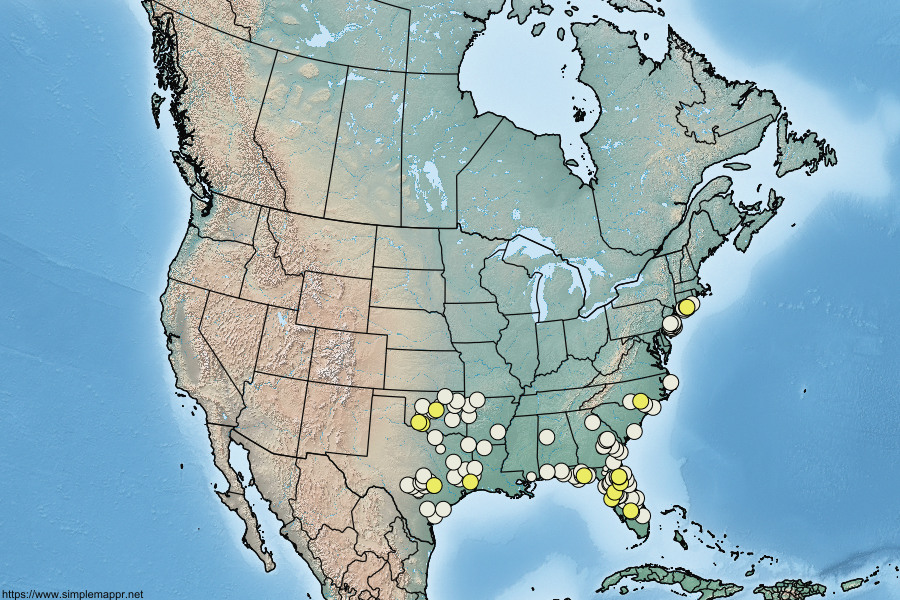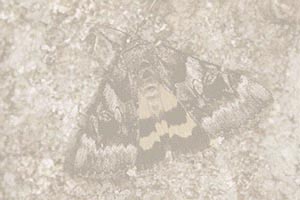 Catocala jair
Catocala jair
Strecker, 1897
One member in a complex of small yellow-hindwinged Catocala, which includes 3
described species
amica,
lineella and
jair,
as well as at least one and perhaps
more undescribed species. Both amica and lineella are widespread and abundant as adults, and
also frequently encountered as larvae; jair is less often found and is more habitat
restricted (oak scrubs and barrens; but it can be common where it occurs). Larvae of amica often have a lighter
tan ground color compared to the darker steely and purplish-tinged ground color of lineella, especially from A5 toward
the anterior; in amica the
dorsal tubercles are
usually black with more limited orange than in lineella; many larvae cannot be confidently
assigned to species
without the reared adult. In comparision, larvae of jair are more uniformly light gray with
less prominent markings. A number of Quercus are recorded as wild foodplants; larvae of amica more often use
"white" oaks (Section Quercus) and
lineella more often use "red" oaks (Section Lobatae), but there is considerable overlap.


|


